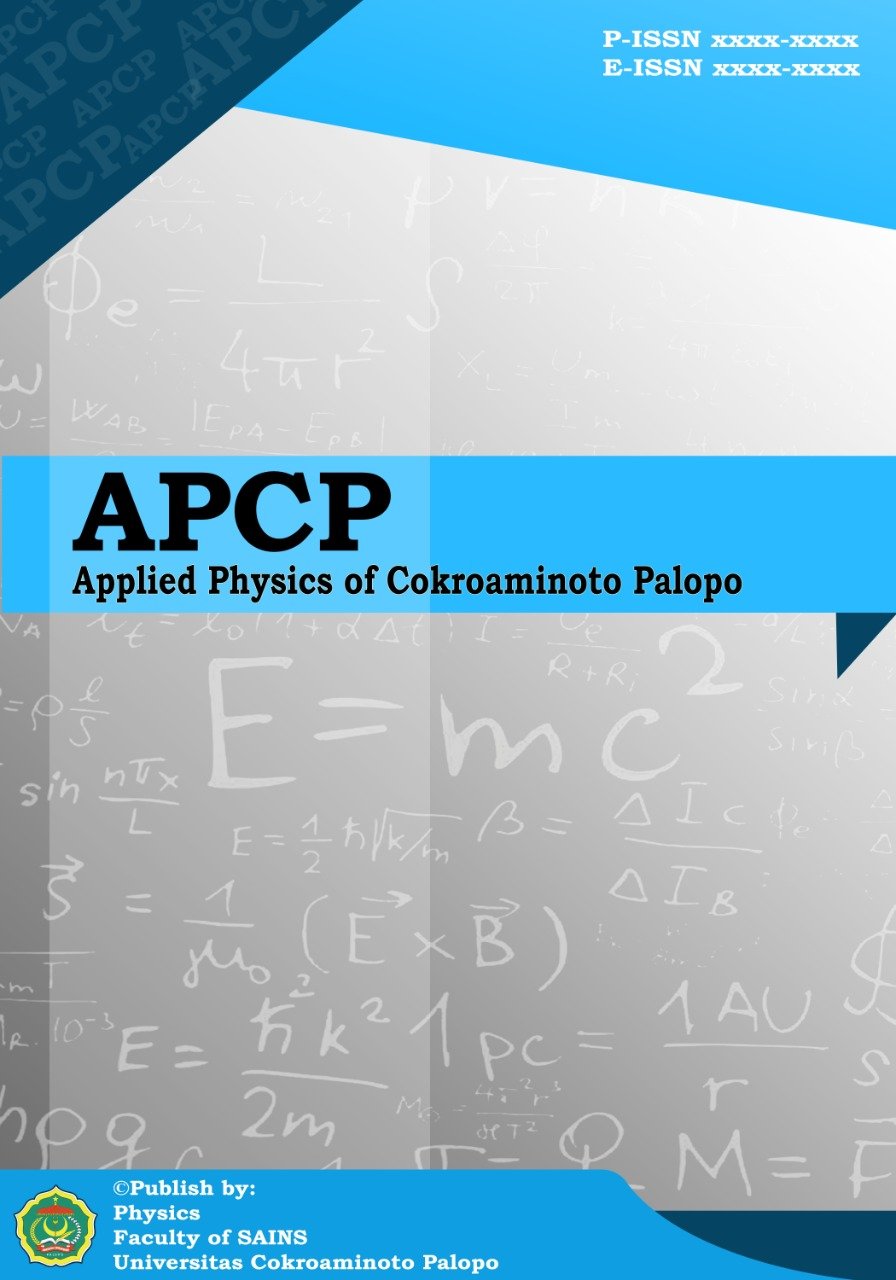ANALISIS SPASIAL SEBARAN POTENSIAL DIRI BATUAN KAWASANMATA AIR PANAS
DOI:
https://doi.org/10.30605/apcp.v1i1.39Keywords:
air panas, Pincara, potensial, SPAbstract
A research has been carried out with the title Spatial Analysis of the Potential Distribution of Rocks in the Hot Springs Area which aims to determine the potential distribution of rocks in the Pincara hot spring area and to determine the subsurface rock structure of the Pincara hot spring area based on the potential properties of the rocks. This study uses a Self Potential (SP) tool, by measuring the potential value at each measurement point, the potential value of surface temperature and the pH of hot water as supporting data. Retrieval of data for each measurement point using a fixed base technique (fix base). Potential data collection for daily correction is done by measuring the potential value at the same point repeatedly in a certain time interval. SP data collection points are 50 with a grid spacing of 5 meters. The results of the research in map 1 show that the characteristics of Pincara 1 hot springs have a surface temperature of 650C, smell of sulfur, there are boasting of gas bubbles, a measured pH of 7, while in map 2 the measured surface temperature of hot springs is 690C, clear, steamy, smelly. sulfur, visible boasting of gas bubbles, measured pH 8. The highest self potential value is 69.2 mV, the lowest self potential data is 1.2 mV. The average selfpotential in the study area has a value of 17.245 mV. This indicates the presence of igneous rock that causes anomaly. Igneous rock is rock that is conductive.
Downloads
References
Handoko,Andri Wasis., Darsono., Darmanto. 2016. Aplikasi Metode Self Potential untuk Pemetaan Sebaran Lindi di Wilayah Tempat Pembuangan Akhir (TPA) Putri Cempo Surakarta. Indonesian Journal of Applied Physics (2016) Vol. No. Halaman 13
Indriana, Rina Dwi, Nurwidyanto, M. Irham, Haryono, Kurnia W. 2007. Interpretasi Bawah Permukaan dengan Metode Self Potential Daerah Bledug Kuwu Kradenan Grobogan. Berkala Fisika Vol 10 , No.3, Juli 2007 hal. 155-167.
Longley, PaulA., Goodchild, MichaelF., Maguire, DavidJ., Rhind, DavidW. 2005. Geographical Information Systems and Science 2 Edition. John Wiley & Sons Ltd.Chichester.
Rohmah, Siti. 2015. Analisis Sebaran Kesuburan Tanah dengan Metode Potensial Diri (Self Potential) (Studi Kasus Daerah Pertanian Bedengan Malang). Skripsi tidak dipublikasikan. Malang: Fakultas Sains dan Teknologi, UIN Maulana Malik Ibrahim.
Rosid, Syamsu.,Koesnodo, Ramadoni N., Nuridianto, Prabowo. 2011. EstimasiAliran Air Lindi TPA Bantar Gebang Bekasi Menggunakan Metoda SP. Jurnal Fisika Vol. 1 No. 2, November 2011.
Rupiningsih, Setyo. 2010. Aplikasi Metode Self Potensial Dalam Menentukan Aliran Air Bawah Tanah di Wilayah Cisoka Tangerang. Skripsi tidak dipublikasikan. Jakarta: FMIPA UI.
Sehah., Raharjo, Sukmaji Anom. 2011. Survei Metode Self Potential Menggunakan Elektroda Pot Berpori untuk Mendeteksi Aliran Fluida Panas Bawah Permukaan di Kawasan Batu raden Kabupaten Banyumas Jawa Tengah. Jurnal Fisika FLUX, Vol. 8 No.1, Pebruari 2011 (7 – 21).
Suhanto, Edi., Bakrun.2005. Penyelidikan Geolistrik TahananJenis di Daerah Panas Bumi Pincara. (http://www.dim.esdm.go.id- Pusat Sumber Daya Geologi (PMG) diakses tanggal 2 Juli, 2007, 13:12).
Sumardi, Eddy., Sundhoro, Herry. 2005. Geologi Daerah Pincara, Masamba, Kabupaten Luwu Utara, Sulawesi Selatan. Pemaparan Hasil Kegiatan Lapangan Subdit Panas Bumi 2005.
Sundhoro, Herry., Bakrun, Suhanto, Edi., Kusnadi, Dedi., Kusuma, Dendi Surya., Rustama, Iyus. 2007. Prospek Panas Bumi di Lingkungan Granit Daerah Kanan Tedong - Pincara, Luwu Utara, Sulsel. Kelompok Kerja Panas Bumi, Pusat Sumber Daya Geologi.
Susanti, Nova. 2011. Pemodelan Sistem Panas Bumi Pincara Kabupaten Luwu Utara Sulawesi Selatan Berdasarkan Data Geofisika. Tesis tidak dipublikasikan. Jakarta: Program Studi Pasca Sarjana Ilmu Fisika Universitas Indonesia.
Vaidila, Nadine., Rini, Fauziah Peni., Afrari, Indah. 2015. Survei Struktur Bawah Permukaan dengan Metode Self Potential untuk Mengetahui Potensi Panas Bumi (Studi Kasus Obyek Wisata Guci, Jawa Tengah). Jurusan Fisika, Fakultas Matematika dan Ilmu Pengetahuan Alam, Universitas Negeri Semarang


